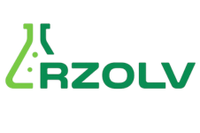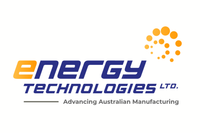2016 is shaping up to be an incredibly dynamic year for the lithium ion battery market. Here’s what every investor needs to know as we enter the second half of the year.
The Investing News Network followed up with Sankar Das Gupta, the founder, chairman and CEO of Electrovaya (TSX:EFL), one of the lithium ion battery market’s most up and coming companies, to hear about the latest trends in this dynamic sector. Last week, we caught up with Das Gupta to learn about the ins and outs of Electrovaya. Here, we took a much broader approach, grilling the CEO and innovator about the macro market trends that every investor should know.
And so, without further ado, here’s what lithium ion battery expert Das Gupta has to say about the future of the market and its hottest trends.
Transportation drives the market forward
During our conversation, it becomes evident how deeply the worldwide push towards clean energy initiatives and the need for lithium ion batteries are intertwined. On a global stage, world leaders are pushing for climate change reform, cleantech investment and environmental activism. During last year’s global climate conference in Paris, Bill Gates announced an energy research initiative drawing on billions of dollars from 28 private investors, spanning private billionaires to the University of California. At the time, Gates stated that “we need innovation to get breakthrough solutions. These are investors who care about clean energy and cheap energy.”
For Das Gupta, this innovation boils down to “transportation and utility usage.” And this is where lithium ion batteries come in. While we have innovative solutions to generate and use clean energy, it’s how we deliver this energy that is proving to be the real problem. Lithium ion batteries, it seems, are offering the solution. For instance, take the case of public transportation. Last year, the vast majority of Paris’ public buses were running on diesel, despite the city having committed to an ambitious Energy Climate Plan. By 2025, however, all of the Greater Paris network’s 4,500 buses will be clean and 80 percent will be electric. In order to meet this goal, demand for lithium ion batteries is spiking. Indeed, Electrovaya has already signed a deal in this market.
Lithium ion battery advances
With increased demand for lithium ion batteries, we’re bound to see some developments in the market. Indeed, Das Gupta tells INN that he was recently on a panel with representatives from Samsung (KRX:005930) – another major player in the market – who estimated that the lithium ion batter market could rival the size of the pharmaceuticals market. Even more conservative estimates illustrate a bright future. Lux Research forecasts that the market for lithium-ion batteries in China alone will quadruple by 2025, moving from $1.7 billion to $8.7 billion. Meanwhile, BCG estimates that the market for electric car batteries in Japan, China, Western Europe and the United States will be worth $25 billion by 2020.
With this increase in lithium-ion battery investment, Das Gupta anticipates that we’ll see an increased commitment to safety standards within the industry as a way for different products stand out. However, it’s wrong to assume that the growing market will necessarily spell growing competition for existing players in the market. Indeed, the high cost of entering this market means that it will be very difficult for new companies to enter and capitalize on the wealth. Therefore, for those investors looking to get in on the massive growth in the lithium-ion battery market, it’s a good idea to choose from the existing, established players in the market.
Don’t forget to follow us @INN_Technology for real-time news updates.
Securities Disclosure: I, Morag McGreevey, hold no direct investment interest in any company mentioned in this article.




